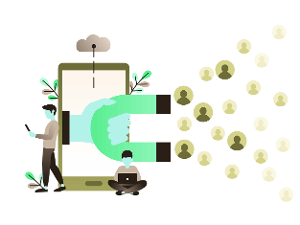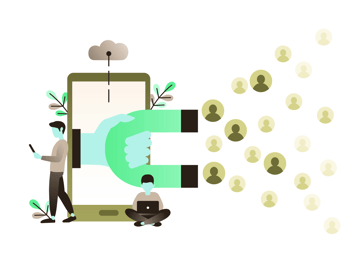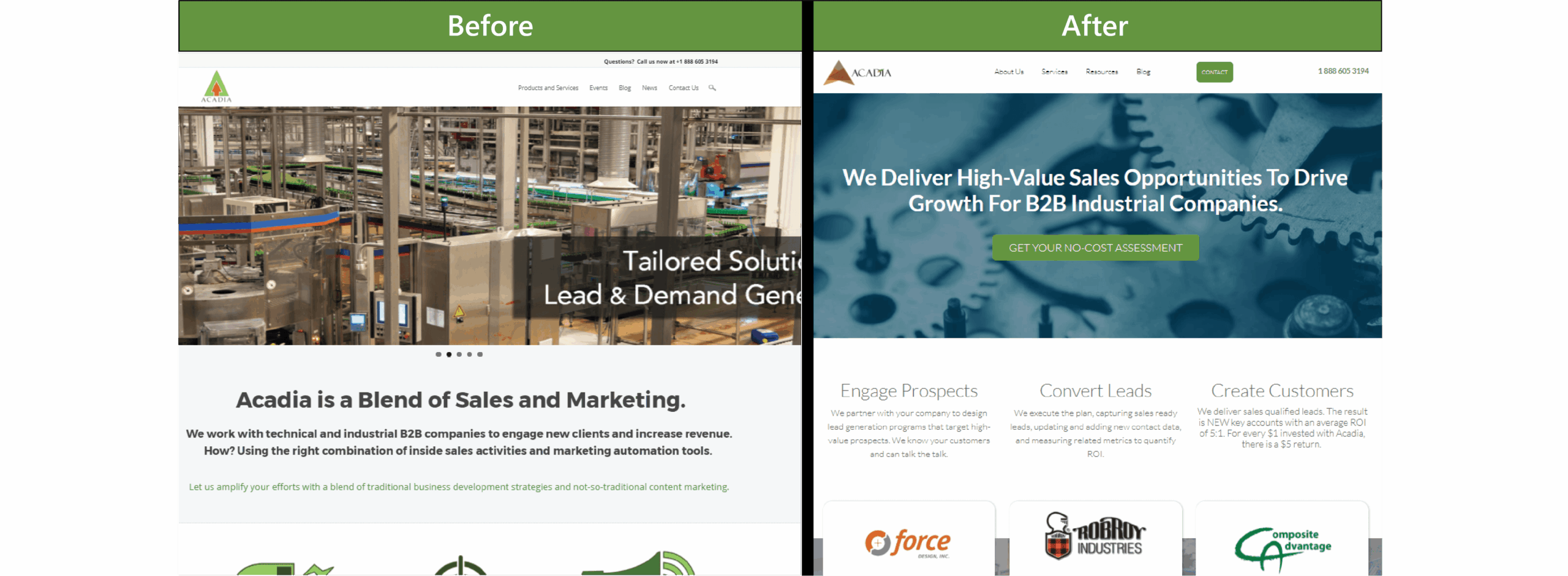
How’s your web traffic? It could be lower because of COVID-19 with people out of work and companies freezing capital expenditures. But a drop could also be due to how your site performs in the wake of the latest Google algorithm updates.
The important question is: when did traffic start to drop? If you regularly track engagement with your website with marketing automation software such as Hubspot or others, you can easily see which pages are being visited and when. Data like that is evidence for identifying exactly when things start to slow down or pick up as opposed to guessing or making an assumption the pandemic (or some other change) is having an impact.

Are you visible?
Are your site and your online content visible to prospects? If your brand or company name is known to people, they might go directly to your site and look around for the info they need, but more often people do a Google search to find information, not a specific company.
What that means is you need to be “findable” in those searches. The strength of your content and how your site is organized and coded has a lot to do with it because that’s what Google builds into its search algorithms. So you need to be visible not only to prospects, but to Google too.
Google updates its algorithm a few times per year, and recently has been announcing impending updates on Twitter and on its webmaster blog. And then web analysts attempt to figure out what the changes were and why some sites dropped or improved in search rankings. And then webmasters try to implement changes to improve rankings and regain lost ground. And then, often, Google makes another update and it starts over again. This tells you a couple important things about your web content:
- Just because you were findable a few months ago doesn’t mean you will be a few months from now
- You need to keep up with web and content best practices to stay visible
- Websites and content can’t be “set and forget” endeavors
According to an article in Inc., Google generally declines to explain exactly what changes are made in detail to prevent people from taking unfair advantage of the changes. But time and again, the general advice from Google has been to focus on building a good-quality website including:
- Providing content that is educational, authoritative, and trustworthy (or E-A-T)
- Paying attention to user signals
- Incorporating SEO keywords
- Verifying that your links work and go to reputable sites
- Creating useful, intuitive site architecture

The value of educational content
Promoting your brand and products are important, after all prospects need to know who you are and what you offer. But they also want to learn something from visiting your site and they want to see that you have some subject expertise relevant to their industry. If you’re strong on branding but light on educational content, you could be penalized by Google, which places a high value on E-A-T content (since people are generally looking for information to learn about products and vendors, as we said above).
This article from SEO-hacker includes some classic advice and questions to guide your content plan.
Search intent is also important, especially searches along the lines of “how to” or “what is” or “why.” If your products or services relate to questions like these, you should create content that both asks and provides the answer in an engaging format (such as blogs, ebooks, and videos). Some examples could be, “how to accurately measure the inner diameter of a bolt” or “what is ROI for automated welding cell” or “why are end-of-line sensors superior to human inspection.”
Content is also valuable for creating conversion points. Examples are things like clicking a button to download a document, filling out a form, or answering a poll question while page loads. In B2B sales cycles incorporating more of these into your site is helpful because it gives them more opportunity to interact with and learn about your brand. And if they’re filling out forms (also known as gated content), they’re showing willingness to give up some personal info in exchange for your content. Just make sure not all of your content is gated, or you risk frustrating prospects and losing their contact information.
Giving users what they’re looking for
These days, B2B buyers are all about doing independent research and finding answers to their questions on their own. It stands to reason that if they find your page in a Google search, visit and read it, and fill out a form to download your ebook, they think there’s enough value in your content to be worth sharing their email address, company name, or phone number – so you better be sure you deliver.
A steady decline in traffic can indicate that you’re not providing what they need, or not as well or in as timely a manner as your competition. Remember that the industrial buying process is a busy one and prospects’ time is limited and there’s a lot of information out there. So instead of checking back with your site for new content or spending time digging for it, users are more likely to try another company’s site or do another search. You need to have the right content the first time, there may not be a second.
We know it can be overwhelming to come up with a solid content plan and then create that content. It takes time to do the research, writing, filming, and web development right. If you’re wondering how to get started or how to make sure you stay visible, let us know – we can help.



